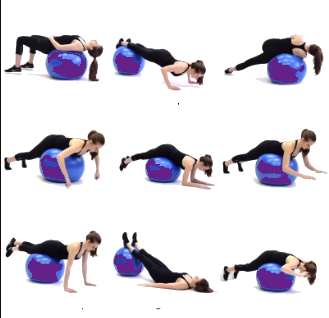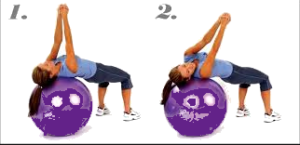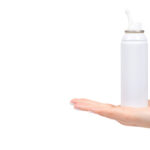the Best Stability Ball Exercises

- Do you want to know how to strengthen your core, protect your joints, and gain more muscle-building benefits
from every workout? It’s all about stability. Or, to be more precise, a stability ball. Stability ball exercises, often
known as exercise balls or balance balls, may take your workouts to the next level.
“Stability ball workouts help to train the body to move as one unit,” says Cody Braun of Openfit Fitness. “The
muscles that make up the core and surround the hips and shoulders must work together to keep the body strong
through a full range of motion when conducting stability ball activities.”
- Do you want to know how to strengthen your abs and joints simultaneously? Balance ball exercises and the
simplicity of an athletic balance ball can take your workouts to the next level.
“Stability ball workouts teach the entire body to move in unison.” The muscles that make up the core and surround
the hips and shoulders work together to keep the body strength over a full range of motion when using the balancing
ball.
Stability is advantageous for a variety of reasons, both inside and outside the gym. Because they have the strength
to stay in the correct posture throughout rigorous actions, stable joints are less prone to be harmed. Brown adds that
being able to move your body as a single unit also helps with weightlifting, jogging, and other athletic pursuits.
Are you ready to start shaping your muscles and strengthening your core? Stability ball workouts can be done at home or at the gym.
What Is the Purpose of an Exercise Ball?
This versatile piece of equipment is commonly referred to as a stability ball. Exercise balls, for example, are
becoming more popular in the workplace as an ergonomic office chair, with the benefit of forcing trunk activation
and optimum posture—perfect for balancing time at your desk! It’s also a go-to item for practically any training
method on the gym floor.
Personal trainer Laura Flynn Endres adds, “It’s a wonderful supplement to any training program since you can use
an exercise ball to work on stability (thus the name), flexibility, strength, and balance.” “Imagine a larger version of a
kid’s ball seen on any playground, but built of a durable material and light enough to roll and test your muscular
control.”
According to Flynn Endres, although most are packed with air, some include a small quantity of sand to keep the
from rolling. “This makes them a little heavier, which provides a little resistance if you’re holding them over your
body,” she explains.
What Sizes Are Available?

“Exercise balls are normally available in five sizes,” says Studio SWEAT OnDemand trainer Tatiana Koval. “You
should select the proper fit based mostly on your height.”
When you’re sitting and upright on the exercise ball, your feet should be flat on the floor, and your weight should be
evenly divided between them, according to Koval. If they don’t reach the bottom, go down a size. “If your knees are
too high, go up a size.” “You want your knees to be level or slightly lower than your pelvis; therefore if your knees are
too high, go up a size.”
Their diameters range from 45 to 85 cm in numerical terms. “You’ll want to choose a ball that’s proportional to your
height,” Flynn Endres explains, “so someone around five feet tall will likely use a 45 cm ball, but someone closer to
six feet will fall somewhere between a 65 and 75 cm ball.”
Keep in mind the degree of bend in your knees, which should be approximately 90 degrees or slightly higher. Also,
keep an eye on the ball’s inflation level to avoid sinking when seated.
Exercise balls are a versatile tool that balls can use to work in everybody’s region, whether you want to have a strong rock core or add shape to your glutes.
“With an exercise ball, you may do various efficient exercises that can be incorporated into any routine,” he says. Consider the following scenario:
Stability Ball Jackknife
Benefits: This core exercise strengthens your hip flexors while squeezing
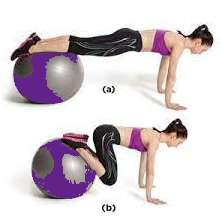
your abs.
Put your hands directly behind your shoulders and your shins on top of a stability ball in a high plank position.
Maintain a straight line from head to toes by bracing your core. This is where you’ll begin.
Squeeze your abs and bend your knees to roll the stability ball toward your hands until only your toes are on it, keeping your hips down.
Return to the beginning posture by pausing, then slowly straightening your legs behind you.
Stability Ball Deadbug

Benefits: Deadbug exercises teach your core to work as
designed to — keeping your spine stable while your arms and
legs do their own thing. This variation cranks it up a notch by
requiring an extra ab squeeze to maintain the stability ball
while also targeting your obliques.
Lie flat on your back on the floor, arms extended straight up,
legs bent at 90 degrees, and a stability ball between your knees and hands. This is where you’ll begin.
Brace your core and steadily lower your right leg and left arm within six inches of the floor, keeping the ball in place
with your right hand and left knee (both should remain in line with your body). Only go as low as you can while
forcing your low back against the floor.
Return to the beginning position by reversing the move and repeating on the other side. Continue alternating sides,
doing the same amount of reps on each side.
Russian Twist
Benefits: Improve your core’s stability and rotational strength in one
simple move that targets your obliques and transverse abdominis.
Lie on a stability ball with your upper back and feet flat on the floor;
knees bent at a 90-degree angle. Maintain a straight line from head to
knees by bracing your core and extending your hips. Extend your arms
straight over your head, palms facing each other. This is where you’ll begin. Roll onto one shoulder as far as you can
while raising the other from the ball by rotating your torso. Your hips should be parallel to the ground. Return to the
starting position by reversing the move. Roll onto the opposite shoulder and repeat.
Stability Ball Rollout
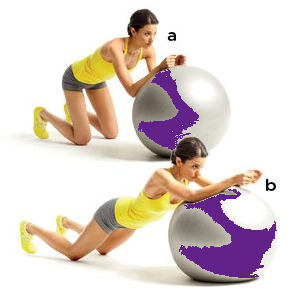
Benefits: This seemingly simple move will shake your abs as it tests
your core strength and stability.
Kneel with your knees hip-width apart and your toes on the floor for
support, with your hands on a stability ball. Slowly roll forward, keeping
your back flat and core braced, without shifting your knees until the ball
reaches your forearms and your body forms a straight line from your
head to your knees. Rollback to the starting position after a little pause.
Stability Ball Wall Squat
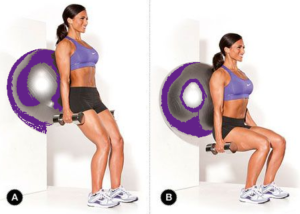
Benefits: Strengthen your glutes, hamstrings, and quads while
building stability through your hips and core. Perform back-to-back
reps, or hold each broker as long as possible.
Place a stability ball between the center of your back and a wall while
standing with your feet hip-width apart. Your feet should be positioned
slightly ahead of your body, and this is where you’ll begin.
Roll your body down the ball, bending your knees until your thighs parallel the floor. Your knees should be parallel
to your toes in the center. Repeat by pausing, then pressing through your heels to return to the beginning position.
Holding a dumbbell in each hand makes this motion more difficult.
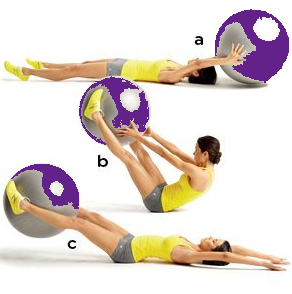
Stability Ball V-Pass
Benefits: This next-level stability ball exercise will put your entire body
to the test. As you transfer the ball between your hands and feet, it
engages your core, and you must engage your inner thighs and arms to
keep the ball from falling to the ground
Lie down with your back flat on the floor and your legs straight, both
hands grasping a stability ball overhead. To reduce any arch in your
lower back, brace your core. This is where you’ll begin. Squeeze your abs
to lift your arms and legs into a “V” position with the ball between your calves. Return to the beginning position but
with the ball between your legs. Rep the movement, passing the ball between your hands and legs each time.
Stability Decline Push-Up

Benefits: This advanced bodyweight move is a version of a decline
push-up that challenges your core just like your arms. You should be able
to perform regular push-ups with confidence before taking on this
exercise.
Put your hands directly below your shoulders and your toes on top of a
stability ball in a high plank position. To keep your body in one straight
line from head to toes for the duration of the action, brace your core and
clench your glutes. Lower your chest toward the ground by bending your
elbows while keeping your elbows tucked tight to your body. They should form a 45-degree angle with your body
when viewed from above.To return to the plank posture, straighten your arms and repeat.
How Do You Use an Exercise Ball?
An exercise ball can be used in various ways, and it’s a great piece of home gym equipment because it doesn’t take up
a lot of space. A stability ball can be used to replace a bench in various exercises. Suppose you’re used to doing
exercises on a stable bench. In that case, Braun notes that using an exercise ball will challenge you to fire up your
core, hip, and shoulder stabilizers differently. Remember that, because of the increased need for stability, you should
begin with less weight than you would on a bench.Exercises like ab or hamstring rollouts can also be done with
stability balls. A stability ball can also be used as a weight (a large, lightweight) that you can transfer from one side of
your body to the other or pass between your hands and feet.
